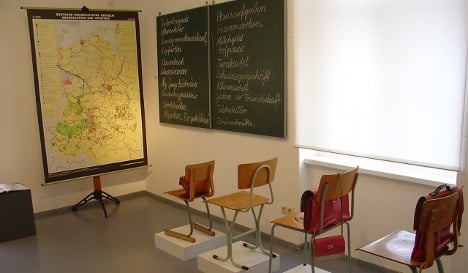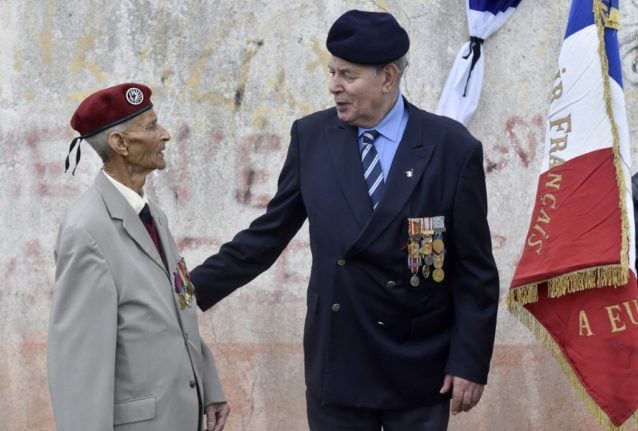The train glides southeast from Berlin through seemingly endless miles of forest, finally emerging from a long corridor of pine trees into East Germany’s past.
Arriving at Eisenhüttenstadt, one could mistake the town for the last outpost of the German Democratic Republic (GDR). It’s so far east mobile phones beep with welcome greetings to Poland.
But the town is also home to the GDR Daily Life Documentation Centre, a unique collection of artefacts culled from everyday life in communist East Germany. Hidden away amongst Eisenhüttenstadt’s pre-fab concrete apartment blocks, the location for the Documentation Centre couldn’t be more appropriate. It is like the smallest part of a Russian matryoshka doll: an East German museum housed within an East German urban museum.
Created from scratch in 1950 as a socialist model town to house the work force of the nearby steelworks, the settlement was named Stalinstadt in1953. When old Joe’s legacy was discredited in the 1960s the by-then booming city was renamed Eisenhüttenstadt in a tip to its industrial origins.
Today, Hütte, as locals affectionately call it, cuts a strangely forlorn figure 20 years after reunification. It has been blighted by job losses from the waning steelworks and decimated by the subsequent exodus of nearly 40 percent of its inhabitants.
Not all East Germans were forced to search for work after the Berlin Wall fell in November 1989, but most were looking to replace their dowdy GDR possessions with shiny western products. Many simply piled their belongings on the pavements outside their flats. But when people heard about the new archive in Eisenhüttenstadt after it opened in 1993, they bombarded it with donations.
The collection grew and grew throughout the 1990s until the small team could hardly keep up with cataloguing the objects of everyday life in East Germany.
“The impulse was to preserve these things,” says archive curator Dr Andreas Ludwig. “And the people immediately trusted this as a place where things that meant a lot to them could be preserved.”
The items on display at the archive are just a smattering of what’s actually been collected. Housed in a separate building the size of a large secondary school is a vast hoard of the archive’s eastern booty. At last count there were some 150,000 objects.
Entering each room of the permanent exhibition is like stepping from a time machine into the GDR of yore.
An East German nursery and classroom are so meticulously recreated you can almost hear children’s voices and the squeak of chalk down the blackboard. Medals and decorations awarded to the proud citizens of the socialist Worker and Farmer State adorn another room.
The history of the steelworks that gave birth to the town, the Eisenhüttenkombinat Ost, fills yet another. One display is titled ‘Propaganda for Plastics.’ Elsewhere a gleaming cabinet showcases uniforms and memorabilia of the communist youth organisation the Young Pioneers.
A reconstructed GDR grocery store features antiquated scales and a treasure trove of ersatz socialist goodies including Vita Cola, Juwel cigarettes, Spreewald gherkins, Mokka Kaffee Gold and Spee washing powder.
In stark contrast, a photograph in the special 1989 exhibition, dating from June of that momentous year, shows a lone woman pushing an empty supermarket trolley round the Kaufhaus Centrum at Berlin’s Alexanderplatz – the bare shelves heralding the coming demise of an ailing regime.
There’s a Disneyfied museum about life in the GDR in Berlin, but the archive in Eisenhüttenstadt doesn’t dabble in trendy Ostalgie, or eastern nostalgia.
There’s an honest sense of melancholy on display here, borne from the sudden disappearance of the GDR. Here people can mourn its passing in familiar surroundings. “The objects represent people’s lives so naturally they are attached to them,” explains Ludwig.
He emphasises that his visitors don’t want to go back to the bad old days before the Wall fell – most simply are looking for a sense of belonging among those items that symbolise their lives in East Germany.
Yet in many regards, the GDR simply refuses to die. Twenty years on, Ludwig still receives phone calls every week from people needing spare parts for washing machines and other domestic items outlasting their long-extinct East German manufacturers.
Dokumentationszentrum Alltagskultur der DDR
Erich-Weinert-Allee 3
15890 Eisenhüttenstadt
Tel: (03364) 41 89 47
Open: Tuesday-Friday 1 pm – 6 pm; Saturday, Sunday, holidays 10 am – 6pm
Admission: €3 adults, €1 concessions, €25 for guided tours
The special exhibition “1989” runs until March 7, 2010 in Eisenhüttenstadt and then from March 19 – May 16, 2010 at the Zitadelle in Spandau, Berlin.



 Please whitelist us to continue reading.
Please whitelist us to continue reading.
Member comments